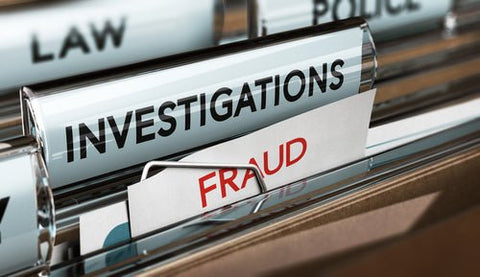(Updated March 19, 2025)
The highest price ever paid for a fake bottle of wine was in 2008, when a billionaire collector named William Koch purchased four bottles of Bordeaux supposedly owned by Thomas Jefferson for a total of $310,700 at an auction in New York. You would think once bitten, twice shy but that was not the case for Mr. Koch. In 2005, Koch purchased a bottle of Romanee Conti from the German wine dealer Hardy Rodenstock for $17,925. However, when Koch began to investigate the bottle's provenance, he discovered several red flags that suggested that it was a fake. For example, the bottle's label misspelled the name of the vineyard which is a common mistake made by counterfeiters. In a separate incident in 2006, several lots of counterfeit Domaine Ponsot, the renowned winery from Burgundy, France that regularly produces wines that fetch 100 point scores, were sold for a total of nearly $600,000.
Before you buy your next bottle of a one-of-a-kind Bordeaux or Burgundian it would behoove you to watch the fascinating documentary, “Sour Grapes,” that sheds klieg lights on the dark world of fake wine.
The story that is the premise for the doc is a tangled web of Daniel Craig as James Bond level intrigue. Sour Grapes was inspired by the real-life story of Rudy Kurniawan, a wine collector and dealer who was convicted of wine fraud in 2013. Kurniawan became famous in the wine world for his seemingly endless supply of rare and expensive wines, many of which were sold at auctions for record-breaking prices.
However, in 2008, suspicions began to arise about the authenticity of some of the wines that Kurniawan was selling. In particular, there were concerns about a collection of rare Burgundy wines that Kurniawan had acquired and was offering for sale at auction. The wines in question were purported to be from the previously mentioned Domaine Ponsot but some experts began to suspect that they were fake, especially the winery itself because they were from vintages that the winery never produced. This would be like an auction for Prisoner Wine Company’s Red Blend from a 1989 vintage when the founder Dave Phinney did not start making the coveted wine until the year 2000.
To avoid offending the wine community—especially the hypersensitive members of Facebook wine groups—note that there is no similarity between a Burgundy and a California Red Blend; the analogy was purely for illustrative purposes.
As investigations into Kurniawan's wine dealings continued, it became clear that he had been involved in a massive wine fraud scheme, in which he had created and sold counterfeit bottles of some of the world's most valuable wines. In 2013, Kurniawan was convicted of fraud and sentenced to 10 years in prison.
Despite his checkered past, Kurniawan is back in business, but instead of selling fakes, he is peddling blends that he himself, the Milli Vanilli of wine, has produced, claiming his juice surpasses anything coming out of the storied houses of Bordeaux or Burgundy. According to reports, his wine events are sold out, and his wines are selling.
This really gives new meaning to "fake it until you make it," if you ask me.
The other fortunate upshot of this fraud was that it brought widespread attention to wine counterfeiting and with the advent of blockchain technology preventive efforts are being taken to help put a stop to it.
How can blockchain help? Blockchain is essentially a distributed ledger that is used to record transactions across many computers so that the record cannot be altered retroactively without the alteration of all subsequent blocks and the consensus of the network. To prevent wine counterfeiting in practicality, it can provide a secure, transparent and tamper proof system to track a wine’s provenance to ensure authenticity. Bitcoin and Ethereum networks, which are two of the most well-known and widely used blockchains allow anyone to not only create a blockchain wallet, buy and sell cryptocurrency, but also participate in decentralized applications that are built on top of the blockchain.
One example of a decentralized application would be a wine verification tool to track the origin and ownership of a bottle of Domaine de la Romanée-Conti that lands at one of your summer cookouts.
I truly believe it takes a good cookout to appreciate this epic wine—and I am beyond tired of Truly seltzers. The potential for Uncle Ralph to knock over your 1964 "DRC" (currently selling on eBay for $25,000) while reaching for the mustard to top off his cheeseburger only elevates the wine’s preciousness.
But then again if you did not use a blockchain app to track the origin it could have been a fake and you are not missing out on the divinity that pours from such a bottle but just out of some dough.




Comments (0)
There are no comments for this article. Be the first one to leave a message!